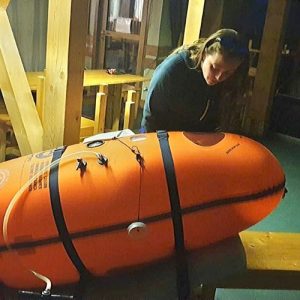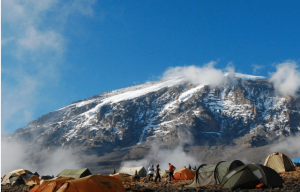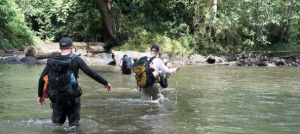Introduction
There is risk in everything we do. It may be fair to say that people signing up to remote and challenging expeditions are likely to be looking for adventure and are potentially more accepting of a higher level of risk than many other people. However, before undertaking an expedition as a participant or as the expedition leader or medic, it is important to understand the potential health risks and decide whether you are comfortable with them. It is also vital to mitigate known risks as far as possible.
The group medic should be prepared for the types of illness and injury they may encounter and be expected to manage on the expedition. The pathologies will vary based on the location of your expedition, the activities you plan to undertake, and the team members (age, past medical history etc.). There are however common themes to be aware of. Any medical condition is more challenging to manage in a remote setting. So as always, prevention is better than cure, and good preparation is crucial to provide good casualty care.
What does the data show?
Data published on medical incidents from expeditions is sparse. This discussion includes data collated from a range of sources referenced later. Risks for individual trips are not directly comparable to one another, by the nature of an expedition much is unknown and can change rapidly, e.g. weather conditions, group fitness, group dynamics. Similarly, medical data from a jungle trip at sea level is not directly comparable to medical data from a high altitude trek in the Himalaya. However, examining data sets from multiple expeditions still highlights common medical conditions to be aware of and overall levels of risks involved.
The sample I have examined includes approximately 450 expeditions, across almost 30 countries, in a range of environments from high altitude to tropics, to desert and Polar Regions.
Key statistics:
- 10-25% of the expeditions reported no medical incidents at all.
- There were an average of 7 medical incidents reported per expedition.
- Around 80-90% of medical incidents were minor, around 6% moderate and 2% serious (usually requiring temporary or permanent evacuation).
Overall, problems seen were as follows:
| Medical (Predominantly gastro-intestinal upset, then respiratory infections, skin infections, insect borne infections e.g. malaria) | 40-50% |
| Orthopaedic/trauma (mostly minor injuries from falls and foot problems) | 25% |
| Environmental (including altitude illness, heat, cold injury) | 15-25% |
| Fauna (e.g. scorpion stings, insect bites, dog bites etc.) | 4-8% |
| Surgical (e.g. eye problems, dental problems, appendicitis, gynaecological emergency, renal tract stones etc.) | 1-4% |
There were some key differences in the most common complaints if the expedition involved high altitude, as follows:
- Trekking <4000m: Gastro-intestinal upset 49%, isolated soft tissue injury 24%.
- Trekking >4000m: Mild acute mountain sickness (AMS) 55%, gastro-intestinal upset 31%, isolated soft tissue injury 12%.
Of the serious incidents the statistics have some important differences too, as the following table shows:
| Altitude illness emergency (severe acute mountain sickness (AMS), high altitude pulmonary oedema (HAPE), and high altitude cerebral oedema (HACE)). | 30-50% |
| Medical emergency (e.g. acute coronary syndrome (heart attacks), sepsis, anaphylaxis) | 20-30% |
| Orthopaedic/trauma emergency | 20-25% |
| Surgical emergency | 5-8% |
| Psychiatric emergency | <5% |
Of the serious incidents, altitude illness is the most common. Of the total number of expeditions studied, high altitude expeditions made up approximately 40%. This demonstrates that altitude illness represents disproportionately more of the serious conditions. Predictably, the risk increases with the higher and more technical mountaineering trips. This is extremely important to know when planning a trip to high altitude and is one of the reasons why more commercial companies are choosing to have medics on their trips to high altitude environments. However, it is vital that these medics have sufficient training and experience to recognise and manage the potentially life-threatening conditions.

The evidence suggests the risk of sustaining serious injury or illness on an overseas expedition is very low. However the consequences of becoming injured or unwell in a remote environment can be very serious. For example if someone were to develop suspected appendicitis almost anywhere in the UK, they could usually be in hospital within a few hours and in theatre a few hours later if necessary. If they were to develop appendicitis in a remote area of jungle in Brazil or whilst trekking at 5000m in Ladakh, India, the evacuation may be extremely difficult and could potentially take up to several days.
Local medical facilities must also be considered, as there is reduced likelihood of a conveniently located hospital or one with the services and standards you require. Participants must understand and accept these risks. Expedition medics and leaders may be required to manage long evacuations, so prior research into evacuation plans and local facilities is essential.
Summary
Broadly speaking, health risks of participating in a well-planned expedition are similar to those encountered during normal active life, serious health problems are rare. The most commonly occurring pathology is gastro-intestinal upset which is mostly avoidable by good hand and food hygiene. Serious problems are more likely to occur on expeditions to high altitude so it is essential that medics and leaders are adept and experienced at preventing and dealing with altitude illness (there will be a separate blog post about altitude illness in the future).
It is important to recognise that having a trained and experienced mountain medic can help keep teams safer and healthier on expedition, but it does not negate risk entirely. One medic in a remote and challenging environment cannot possibly give the definitive care a casualty would get in a UK hospital, however having a medic in the team is still highly reassuring. The medic can proactively prevent many issues and help to manage incidents to ensure minor issues don’t become major problems. I believe that crucially, in the event of a serious incident on expedition, having a trained mountain medic could potentially mean the difference between life and death.

References:
R.M. Lyon and C.M. Wiggins, Expedition Medicine – the Risk of Illness and Injury, Wilderness & Environmental Medicine, 2010: 21: 318-324.
S.R. Anderson and C.J. Johnson, Expedition health and safety: a risk assessment, J R Soc Med, 2000: 93: 557-562.
A. Brants and T. Metcalfe, Practical Tips for Working as an Expedition Doctor on High Altitude Expeditions, High Altitude Medicine & Biology, 2017, 18: 193-198.
Chris Johnson et al, Oxford Handbook of Expedition and Wilderness Medicine, 2nd edition. UK: Oxford University Press.


